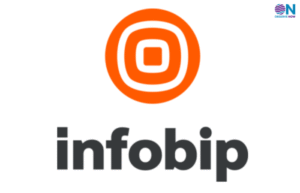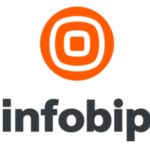Navigating AI in Education with Discussion on Ethical Implementation: Dr Atish Chattopadhyay shares insights with ObserveNow

New Delhi: In recent years, the integration of Artificial Intelligence (AI) in the educational sector has sparked significant interest and debate. This transformative technology offers immense potential to revolutionize the learning experience, promising to enhance engagement, personalization, and efficiency in education. However, as educators and policymakers embrace AI tools and technologies, they face the crucial challenge of striking a delicate balance between fostering creativity and innovation in students while incorporating AI seamlessly into the learning process.
Central to this endeavor is the recognition that AI should catalyze augmentation rather than replacement, empowering students to harness its capabilities effectively to amplify their learning journey. This intersection of AI and education represents a pivotal opportunity to reshape traditional paradigms, nurturing a generation of learners equipped with the skills to thrive in an increasingly AI-driven world. In this regard, Zain Khan interacted with Dr. Atish Chattopadhyay, Director, Jagdish Sheth School of Management (JAGSoM) & Vice-Chancellor, Vijaybhoomi University.
Here are a few excerpts from the interview:
How can AI be harnessed as a friend in the educational sector to enhance learning experiences for fresh talents?
AI’s potential in education is transformative. It is time the institutions integrate AI to personalize the learning journey, adapting to individual student’s pace and style. For instance, AI-driven analytics may be used to provide real-time feedback on student assignments, allowing for tailored support and guidance. Additionally, AI-driven simulations and case studies can enable students to experience complex business scenarios, enhancing their problem-solving skills. Conversational AI powered by Natural Language Processing (NLP) and Natural Language Generation (NLG) can interact with the students 24/7 either through voice or through chatbots. Gamification of the content powered by AI and VR aims to provide an exciting playground for the students where they actively engage with the content and take quick decisions to generate scores through healthy competition with fellow students across the globe. The Virtual Reality (VR) platforms provide an immersive experience to the students where they can attend board meetings, negotiate with the stakeholders, interact with the customers, and address the operational challenges well before they set their feet on the real world.
What potential risks does AI pose as a foe in education, particularly for newcomers to the field?
The risks of AI in education, particularly for newcomers, include reliance on algorithm-driven solutions that may overlook unique educational needs. A significant challenge is ensuring AI doesn’t perpetuate biases. For example, if AI tools are fed historical data that contains biases, these can be unwittingly replicated. As educators, we must emphasize critical thinking and ethical considerations in using AI, ensuring students are aware of these pitfalls. Last but not the least, students should not be over- dependent on LLMs and code generation platforms and should nurture their natural intelligence than relying heavily on artificial intelligence.
In what ways does JAGSoM ensure that students are not only equipped with AI skills but also have a comprehensive understanding of its ethical implications in business?
At JAGSoM, we integrate the ethical dimensions of AI into our curriculum. For example, in our courses, we use case studies on AI-driven hiring processes to discuss biases in AI algorithms. Students engage in projects where they must evaluate the ethical implications of AI deployments in business, fostering an understanding of AI’s societal impact.
How does JAGSoM strike a balance between fostering creativity and innovation in students while incorporating AI tools and technologies into the learning process?
To balance creativity and AI, JAGSoM encourages projects where students use AI as a tool to enhance creative solutions. For instance, in a marketing course, students might use AI to analyze consumer data, but the insights for a campaign and the design are a function of human-centered creativity. This approach ensures that while AI provides insightful data, the human element of creativity is paramount.
How does JAGSoM address concerns about job displacement due to AI and educate students on harnessing AI as a tool for augmentation rather than replacement?
To address AI-related job displacement concerns, JAGSoM focuses on the fundamentals. We provide students an orientation on ‘learning-to-learn’ and to be a continuous learner.
Each time a new technology came in – machines of the Industrial Revolution, to computers to the internet – concerns of job displacements came simultaneously. However, each time new job roles emerged, the concerns remained unfounded. The same will be the case with AI.
Students also learn how what they see or interact on the internet determines what they are fed with. For example, if one is used to viewing cricket, the content that he/she will be fed will be to do with cricket based on past behavior – students are made to understand this phenomenon to guard against unintended bias.
We make students understand that AI will continue to remain dependent on existing data, while humans have the power of imagination. The ability to connect the dots across multiple disciplines and humane values like empathy is what will keep a professional employable going forward.
















